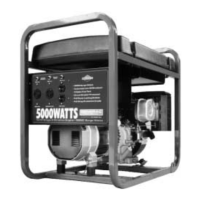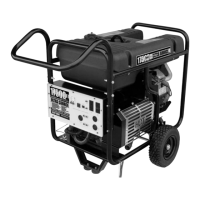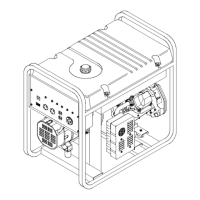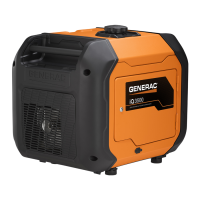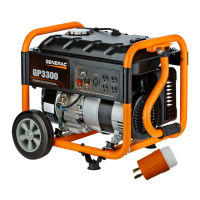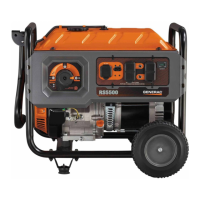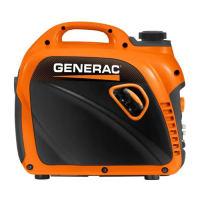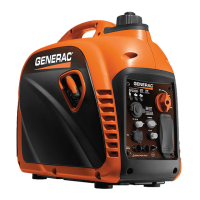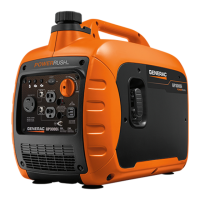13
The battery represents a risk of high short
circuit current. When working on the battery,
always remove watches, rings or other metal
objects, and only use tools that have insulated
handles.
An authorized operator should inspect the engine battery system
monthly (or 10 hours). At this time, the battery fluid level should
be checked and distilled water added if needed. Battery cables
and connections also should be inspected for cleanliness and
corrosion.
Once every six months (or 100 hours), an Authorized Service
Technician should inspect the battery system. At this time the
battery condition and state of charge should be checked using a
battery hydrometer. The battery should be recharge or replaced as
required.
THE BATTERY
Servicing of the battery is to be performed or
supervised by personnel knowledgeable of bat-
teries and the required precautions. Keep unau-
thorized personnel away from batteries.
DO NOT dispose of the battery in a fire. The
battery is capable of exploding.
A battery presents a risk of electrical shock
and high short circuit current. The following
precautions are to be observed when work-
ing on batteries:
• Remove the 10A and 15A fuses from the gen-
erator control panel.
• Remove watches, rings or other metal objects;
• Use tools with insulated handles;
• Wear rubber gloves and boots;
• Do not lay tools or metal parts on top of the
battery; and
• Disconnect charging source prior to connecting
or disconnecting battery terminals.
DO NOT open or mutilate the battery.
Released electrolyte has been known to be
harmful to the skin and eyes, and to be toxic.
The electrolyte is a dilute sulfuric acid that is
harmful to the skin and eyes. It is electrically
conductive and corrosive.
The following procedures are to be observed:
• Wear full eye protection and protective clothing;
• Where electrolyte contacts the skin, wash it off
immediately with water;
• Where electrolyte contacts the eyes, flush
thoroughly and immediately with water and
seek medical attention; and
• Spilled electrolyte is to be washed down with
an acid neutralizing agent. A common practice
is to use a solution of 1 pound (500 grams)
bicarbonate of soda to 1 gallon (4 liters) of
water. The bicarbonate of soda solution is to
be added until the evidence of reaction (foam-
ing) has ceased. The resulting liquid is to be
flushed with water and the area dried.
Lead-acid batteries present a risk of fire
because they generate hydrogen gas. The
following procedures are to be followed:
• DO NOT SMOKE when near the battery;
• DO NOT cause flame or spark in battery area;
and
• Discharge static electricity from body before
touching the battery by first touching a ground-
ed metal surface.
Be sure the AUTO/OFF/MANUAL switch is set
to the OFF position before connecting the
battery cables. If the switch is set to AUTO
or MANUAL, the generator can crank and
start as soon as the battery cables are con-
nected.
Be sure the utility power supply to the bat-
tery charger is turned OFF and the 10A and
15A fuses are removed from the generator
control panel, or sparking may occur at the
battery posts as the cables are attached and
cause an explosion.
A negative ground system is used. Battery connections are shown
on the wiring diagrams. Make sure the battery is correctly con-
nected and terminals are tight. Observe battery polarity when con-
necting the battery to the generator set.
BATTERY REPLACEMENT
For battery replacement consult the battery replacement tables.
Diesel Engine Battery Size Minimum CCA
2.4L
GRP 27 or GRP 31 650 or 925
3.4L
4.5L
GRP 31 or GRP
31E
925
6.7L (100, 130kW) 1 or 2 X GRP 31 925
6.7L (150, 175kW)
2 X GRP 31 925
8.7L
10.3L
2 x GRP 8D 925 or 1155
12.9L
13.0L
16.0L
18.0L
22.0L
Maintenance
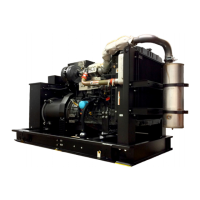
